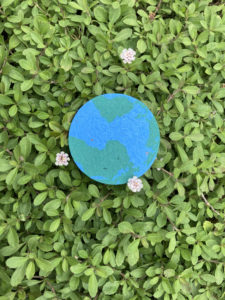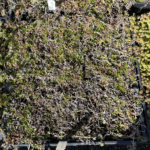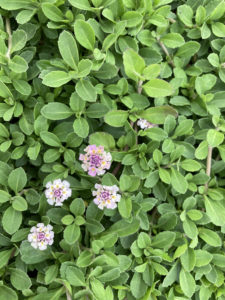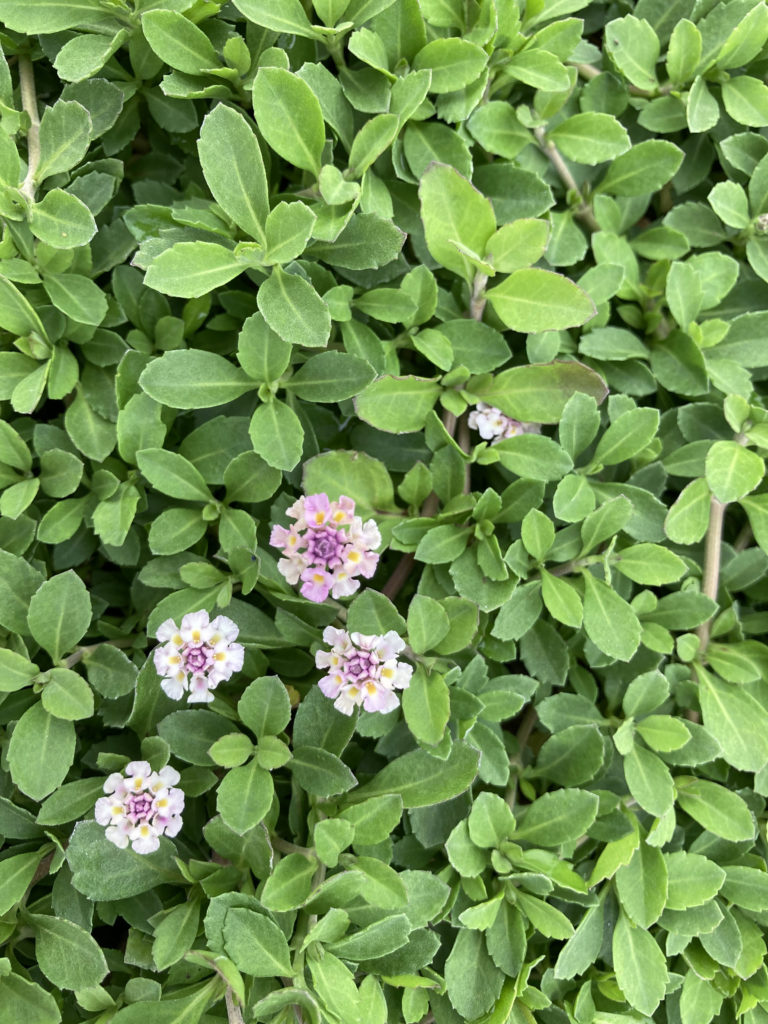
Kurapia New White and Pink is the best Kurapia
“My nursery is selling Lippia in flats, is that the same thing as Kurapia?”.
“My neighbor has Kurapia Sod, is this the same?”
“My gardener says he bought groundcover flats of Kurapia, is this the same?”
There is a lot of confusion in the landscape industry as Kurapia becomes more and more well known in the marketplace. Everyone either wants to sell it, or convince you they have something that is the same. Many of the products other companies offer are inferior products that are not the same. Be sure you’re buying the best!
Let’s talk about what other companies are selling, claiming it’s just as good as Kurapia Plugs
First, let’s start with “native” Lippia, with a common name as “frogbit”. Known as Lippia nodiflora or Phyla nodiflora to scientists, this is a plant that been found in primarily the Americas. It’s an introduced species in just about every location it’s now found, and it gained popularity at one time as a groundcover. Lippia was popular among those looking for lawn alternatives for its growth habit and ability to be walked on. However, once gardeners (and their neighbors) noticed the plant popping up everywhere, they realized the plant had a glaring issue. It spread everywhere.
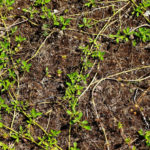
Lippia Nodiflora after a year in the garden, spreading in the wrong areas and leaving dead plants behind
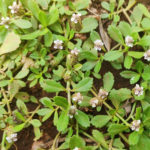
Lippia nodiflora about to spread seeds all over the yard, each flower head can produce a thousand seeds!
Lippia has adapted to so many places due to this seed scattering. Each flower after it dries produces quite a few seeds, which easily germinate in a wide area. After Lippia seeds it slowly starts to die, and by winter they’ve almost completely died out, turning brown and leaving many seeds waiting for spring to spread everywhere.
Since customers can’t see the difference, you can see flats like these on the tables of many nurseries. What they don’t show it how it looks in the winter in those same flats. They don’t tell you about the seeds, and they don’t tell you that it does in the winter. Nurseries, who on average throw away from 50 – 75% of their plants a year, don’t sell this product year round like we do for this very reason.
In Japan, Dr. Kuramochi at Utsunomiya University made a valuable discovery. Finding a unique plant growing in the rivers of Japan, and some very careful cross-breeding, the first strain of Kurapia was produced. Originally called Campagna Verde in Japan, it was introduced in California as Kurapia (named for Kuramochi and Lippia), and eventually it started gaining popularity in the industry as a mowable, walkable, drought tolerant plant that didn’t have the invasive seeds.
This variety, known as Kurapia S1, grew in success in the sod industry as it was easy to grow and harvest. However, this variety eventually showed a few issues as well. The aggressive spreading of the plant meant it required more mowing and trimming to keep it from growing too woody, it also requires frequent core aeration in some areas to prevent overcrowding, which can invite disease. This disease spreads fast in S1, as the plant grows so quickly it overwhelms large areas with disease. Lastly, the lighter color just wasn’t as green as most grasses, and some didn’t like the flower heads as they were sort of longer and stayed on the plant long after flower finished blooming. Thus, a solution was needed. We no longer sell S1 in plugs and have chosen to discontinue selling it to the public.
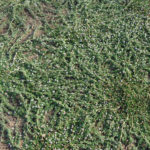
A side by side test of Kurapia S1 and New White, S1 spreads faster and creates ugly long strands that requires more mowing
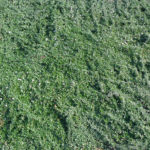
Kurapia New White grown next to Kurapia S1, note the lush and full growth, with more even coverage and will need less mowing
In 2016 Kurapia introduced Kurapia New White to the market. With a brilliant green color, it dazzled homeowners with its more uniform growth, dazzling cloverlike flowers, and it’s lower degree of maintenance and water needs. Currently, Kurapia New White is the most sought-after plant for savvy gardeners and high end landscapers, New White has graced many homes and businesses, including the campus of Cal Poly Pomona and the garden of the Irvine Ranch Water District. As word gets out, we’ve been increasing production to ensure that all customers who wants it can get it, grown in sterilized plugs.
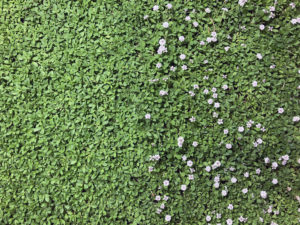
Kurapia New White grown showing side by side with mowing and no mowing, both look lush and handsome in full sun
However, the improvements also led to the invention of Kurapia Pink, introduced to the US in 2020. Sharing the qualities of Kurapia New White, but with an intense lavender flower that fades to a vibrant pink, Kurapia Pink has gained its own fans. Many landscapers like to interplant it around other colorful shrubs. One interesting field test revealed that Pink has a very attractive horizontal growth that interlocks with other stems that makes it into a mounding, undulating shape that compliments the heart-shaped leaves, all while having the same durability and drought tolerance of Kurapia Pink.
However, with the rise of the popularity of Kurapia, many growers are starting to sell this variety of Lippia/Phyla, usually in groundcover flats, telling their customers it’s the same product. It isn’t. This is a photo of Lippia sold this time of year, and photos of the same flats in late fall. It shows how this variety almost completely dies out after it seeds.
If you see someone offering you Kurapia in groundcover flats (square plastic masses of plants in a single block of dirt and mud), you aren’t getting our product and you won’t know what you are purchasing. It could be illegally propagated (and these companies run the risk of lawsuits for violating our patent or trademark) or it could be something grown from seed with who knows what invasive strain. You should order directly from us so you can tell you’re getting the best plants on the market.
Thank you for visiting Kurapia.com, the ultimate drought tolerant groundcover and lawn alternative.


